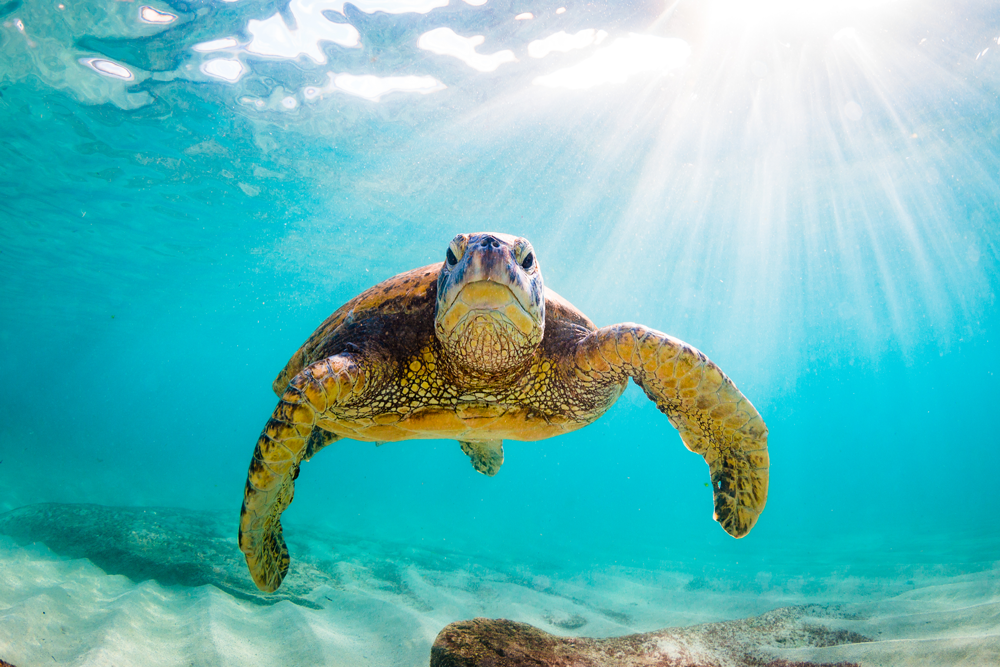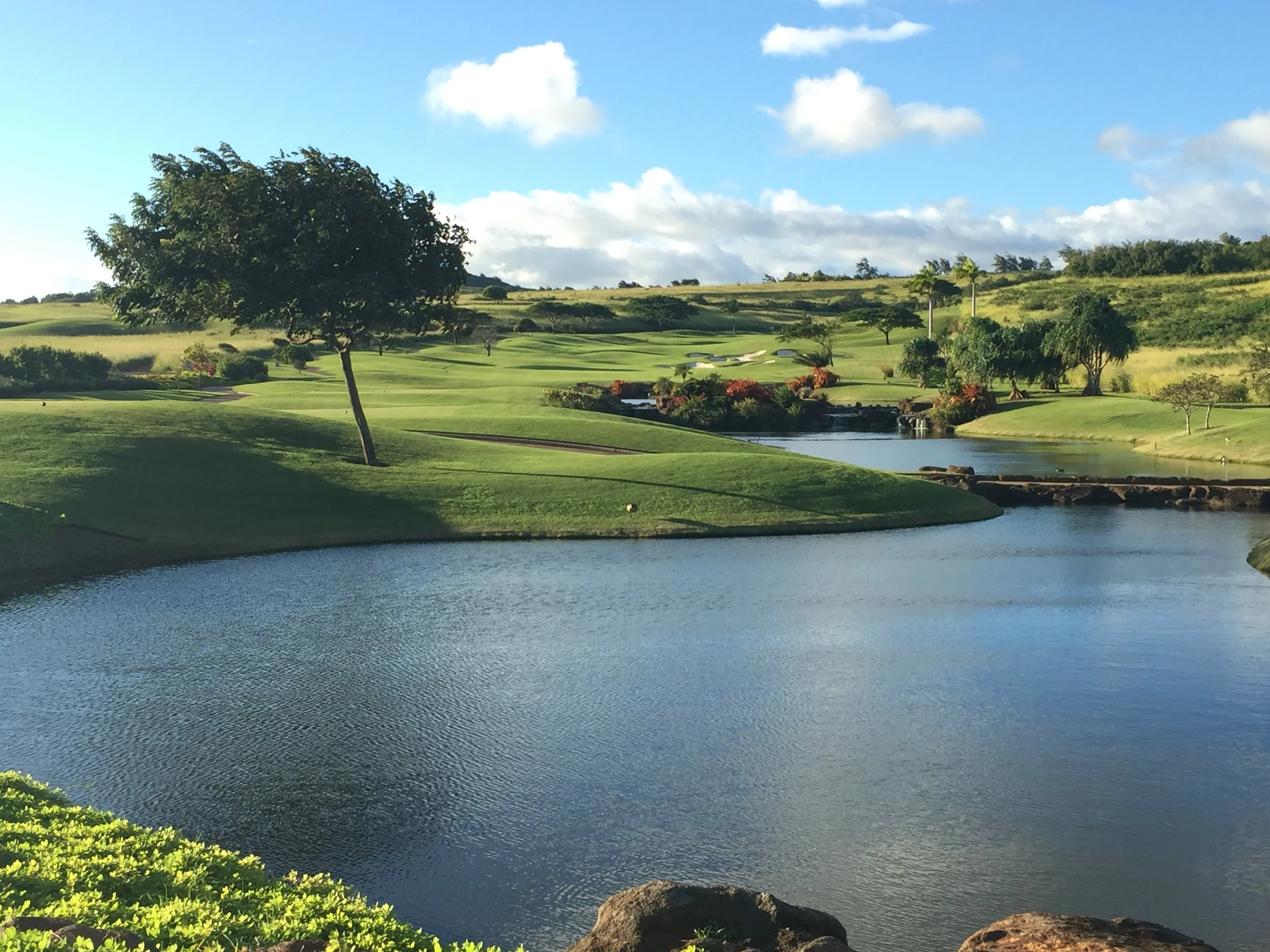3 - Pollinators

Healthy pollinator populations are critical to our wellbeing. Macadamia nuts, bananas, papaya, avocados, guava, and coffee are examples of Hawai’i crops that rely on honeybees and native bees for pollination.
Honeybees have faced an increasing level of threats nationwide. Deadly parasites, habitat destruction, invasive alien species and lethal chemical pesticides are identified threats to pollinators which support agriculture in Hawaiʻi. Seven species of Hawaiian yellow-faced bee, decimated by invasive species and habitat loss, are now federally protected. The yellow-faced bees are the only bees native to the Hawaiian Islands. They are a keystone species in the islands’ ecosystems, as many of Hawai’i’s native plant species are not well adapted to pollination by non-native pollinators.
With so much focus on honeybees, it can be easy to overlook other pollinators. Midges, for example, are important in pollinating Theobroma cacao, the tree that gives us chocolate. Flies, beetles, and butterflies also play an important role in pollination, and endemic moths, birds, and bees that co-evolved with Hawai'i’s native plants are of critical importance.
APPLICATION & MONITORING
Insecticides have been a focal point for concerns regarding pollinator decline. It is important to implement IPM practices and avoid applying certain chemical formulations. In particular, the neonicotinoid class (including imidacloprid). Insecticides can have lethal or sub-lethal effects on pollinators, underscoring the need to always follow label precautions, including instructions for irrigating products to increase below ground efficacy and removal of residues from foraging zones of pollinating insects. Pollinator-protection language is a requirement found on pesticide labels. Follow label information concerning application when plants may be in bloom; avoiding application during bloom season. Stay on target by using coarse-droplet nozzles and monitor wind to reduce drift. Before applying a pesticide, scout the area for both harmful and beneficial insect populations; do not apply pesticides when pollinators are active. Apply pesticides only when the indicated threshold of damage has been reached. If possible, mow flowering plants (weeds) before insecticide application and if flowering weeds are prevalent, control them before applying insecticides.
CONTROLS
Use of insecticides that have a lower impact on pollinators is a best practice and use of the latest spray technologies, such as drift-reduction nozzles will assist to prevent off-site (target) translocation of pesticides. Avoid applications during unusually low temperatures or when dew is forecasted. Finally, try to use granular formulations of pesticides that are known to be less hazardous to bees and consider lures, baits, pheromones, or beneficial insects as alternatives to insecticides for pest management. Reference Integrated Pest Management section for additional BMPs.
POLLINATOR HABITAT
Identify plant varieties that encourage pollinator populations. This includes color, shape, odor, and native species. Aesthetic gardens, window boxes and container gardens, should contain a variety of plants of different heights that provide attractive color and nectar for bees and butterflies. Consider placement of beehives in native areas; honey produced onsite can provide opportunities for member, guest, and community education. It also encourages local sourcing when incorporating into clubhouse or resort menu items.
Resources for plant varieties that attract pollinators specific to Hawai’i include The Pollinator Partnership and North American Pollinator Protection Campaign Hawaiʻi Islands Regional Guide, or your local Natural Resources Conservation Service (NRCS). The North American Pollinator Protection Campaign (NAPPC) compiled guidelines, Pollinator Friendly Practices (PFP), to be used by organizations in support of land management practices in schools, private industry, public spaces, agriculture, forests, and homes.








